Your breakfast cereal is probably fortified with vitamins and minerals. And for snacking you may eat protein bars that have as much protein as a full chicken breast. It shouldn’t come as a surprise, then, that farmers have begun using biotechnology to improve on the natural levels of vitamins, minerals, and other nutrients in the fruits, vegetables, and livestock they produce.
For thousands of years, humans have been practicing a relatively crude and slow form of genetic engineering—the manipulation of a species’ genome in ways that do not normally occur in nature. In its simplest form, genetic engineering is the careful selection of the plants or animals to be used as the breeders for a crop or animal population. Through this process, farmers and ranchers have produced meatier turkeys, seedless watermelons, and big, juicy corn kernels (FIGURE 5-30). But what used to take many generations of breeding can now be accomplished in a fraction of the time, using recombinant DNA technology, the combination of DNA from two or more sources into a product.
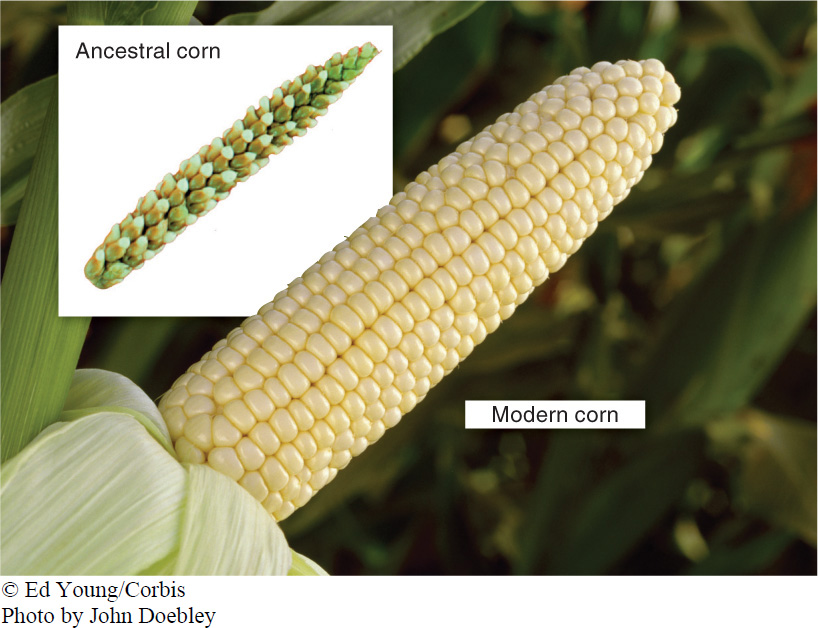
In crop plants, for example, the process begins with the identification of a new characteristic, such as larger size or faster ripening time, that farmers would like in a particular crop. Traditionally, breeders would then search for an organism within the same species that had the desirable trait, breed it with their crop organisms, and hope that the offspring would express the trait in the desired way. With recombinant DNA technology, the desired trait can come from any species, so the pool of organisms from which the trait can be taken becomes much larger. Organisms produced with recombinant DNA technology are referred to as genetically modified organisms, or GMOs.
209
Although the rewards are potentially huge, in practice, the process of creating transgenic species that are more nutritious or have other desirable traits turns out to be difficult. Nonetheless, the results so far hint at a fruitful marriage of agriculture and technology.
How might a genetically modified plant help 500 million malnourished people?
Nutrient-
Mammals generally make vitamin A from beta-
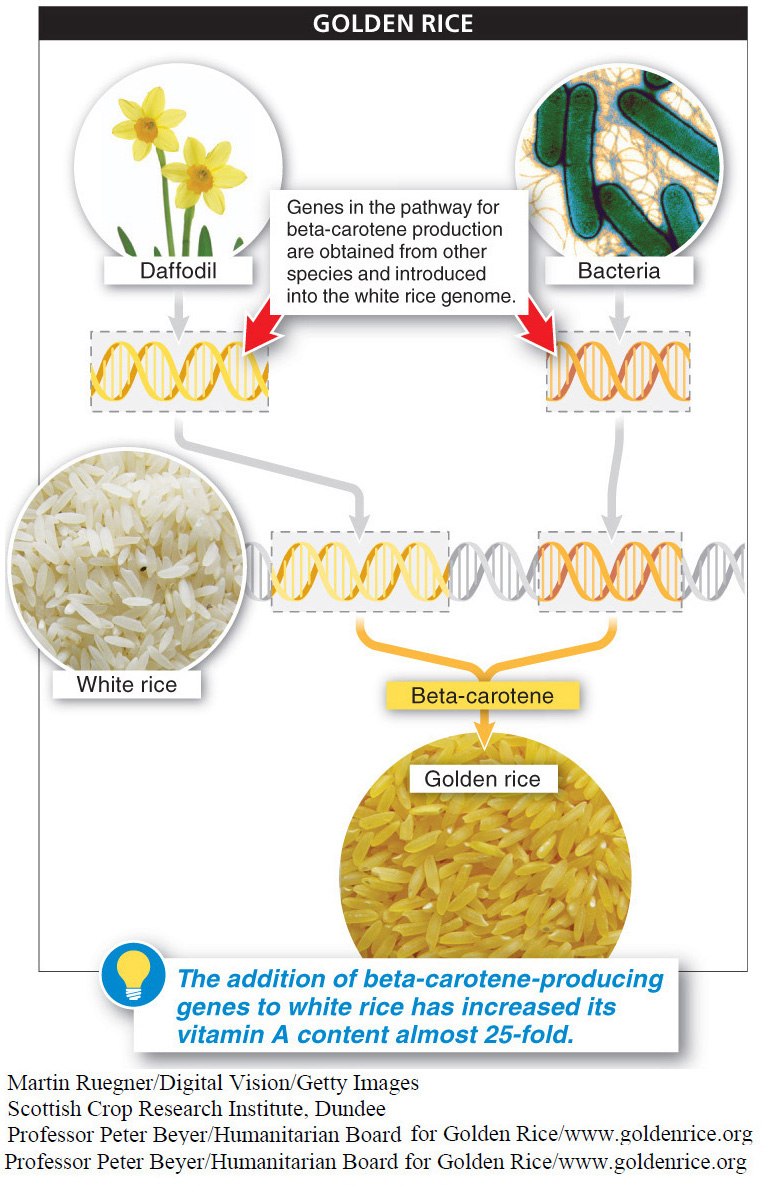
“Italians come to ruin most generally in three ways, women, gambling, and farming. My family chose the slowest one.”
— POPE JOHN XXIII
While the development of golden rice demonstrates that biotechnology, in the near future, may help us produce food that is more nutritious, biotechnology has already had a much more profound impact than this on agricultural practices in the United States. It is not a stretch to say that we are in the midst of a revolution—
Currently, more than 170 million acres worldwide are planted with genetically modified crops, most containing built-
210
What genetically modified foods do most people in the United States consume (usually without knowing it)?
The numbers are surprising: 86% of all corn grown in the United States is genetically modified; 93% of all cotton grown is genetically modified; and 93% of all soybeans grown are genetically modified (FIGURE 5-32). Two factors explain much of the extensive adoption of genetically modified plants in U.S. agriculture. (1) Many plants have had insecticides engineered into them, which can reduce the amounts of insecticides used in agriculture. (2) Many plants also have herbicide-
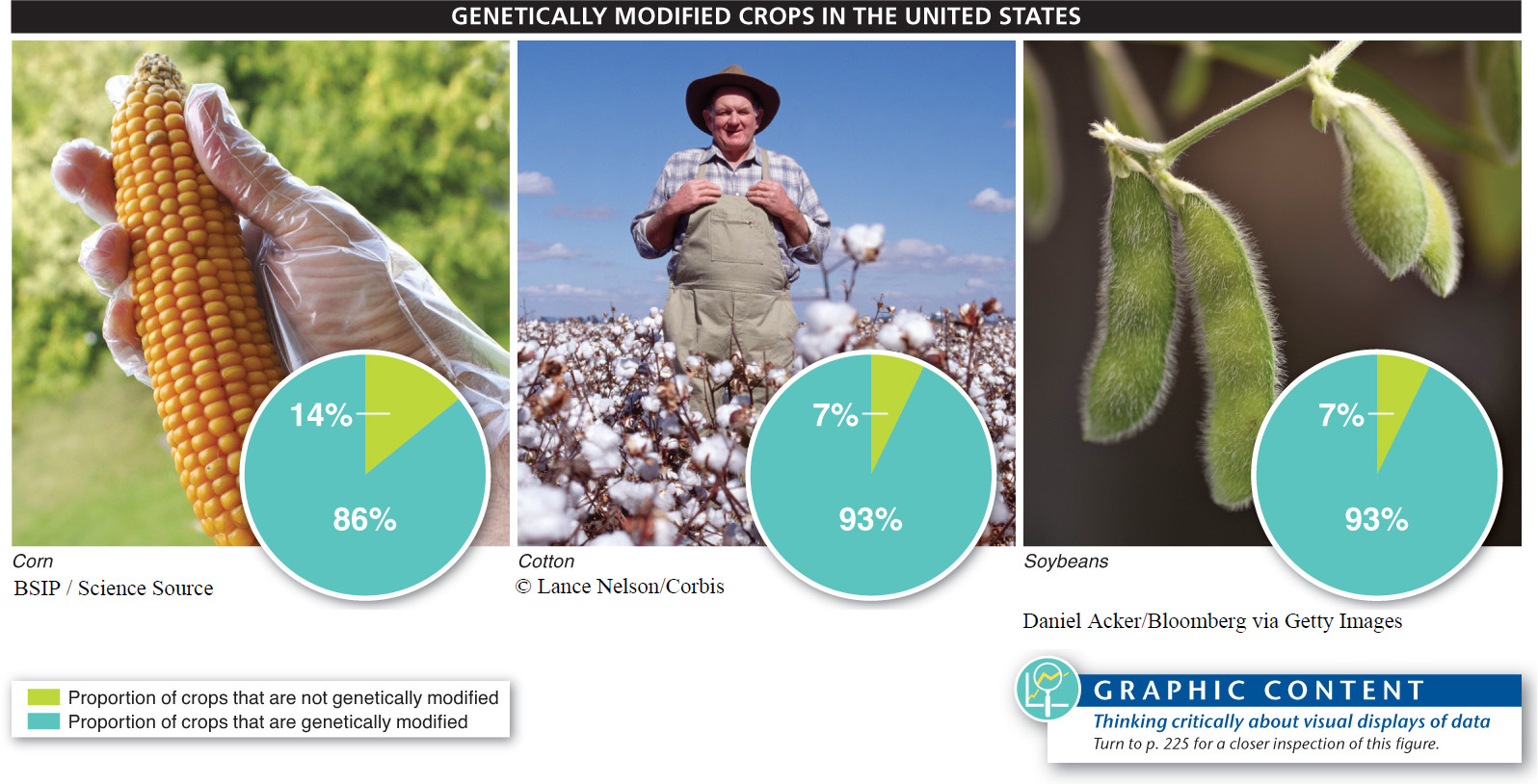
Here are some of the biggest successes in the application of recombinant DNA technology to agriculture.
Insect and herbicide resistance Insect pests have a field day on agricultural crops. Crops planted at high densities and nurtured with ample water and fertilizer represent a huge potential food resource for insects. Every year, about 40 million tons of corn are unmarketable as a consequence of insect damage. Increasingly, however, farmers have been enjoying greater success in their battles against insect pests.
Farmers owe much of this success to soil-
How can genetically modified plants lead to reduced pesticide use by farmers?
Beginning in 1961, the toxic Bt crystals were included in the pesticides sprayed on crop plants. Then in 1995, the gene coding for the production of the Bt crystals was inserted directly into the DNA of many different crop plants, including corn, cotton, and potatoes. As a consequence, farmers no longer need to apply huge amounts of Bt-
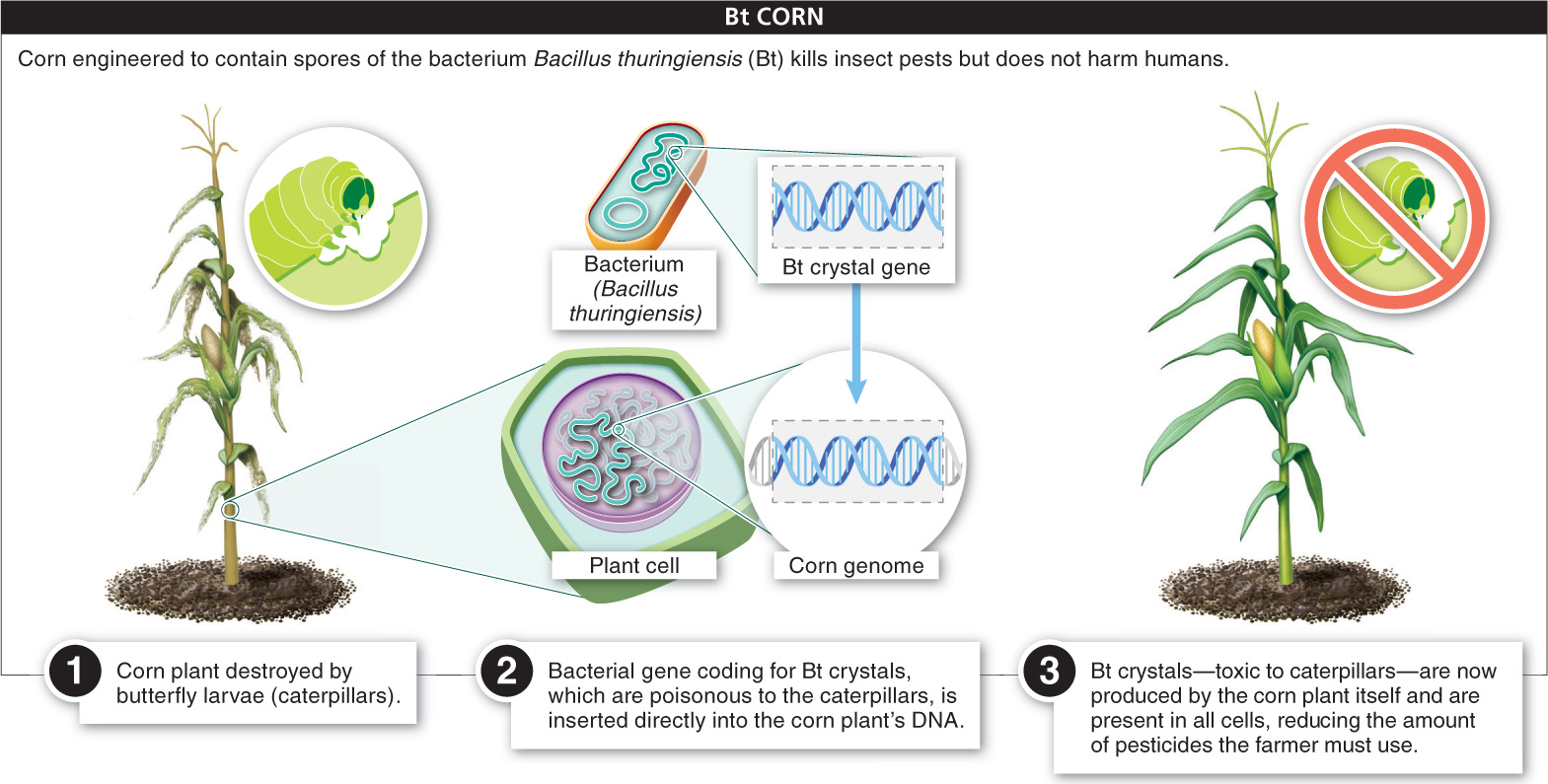
211
Bacteria have come to the aid of farmers in their fight against pests in another way, too. In the 1990s, researchers discovered a bacterial gene that gives the bacteria resistance to herbicides, and they introduced the gene into crop plants. Integration of this gene into the plants’ DNA gives them resistance to herbicides, allowing farmers to kill weeds with herbicides but leave the crop plants unharmed, greatly increasing yields (FIGURE 5-34).
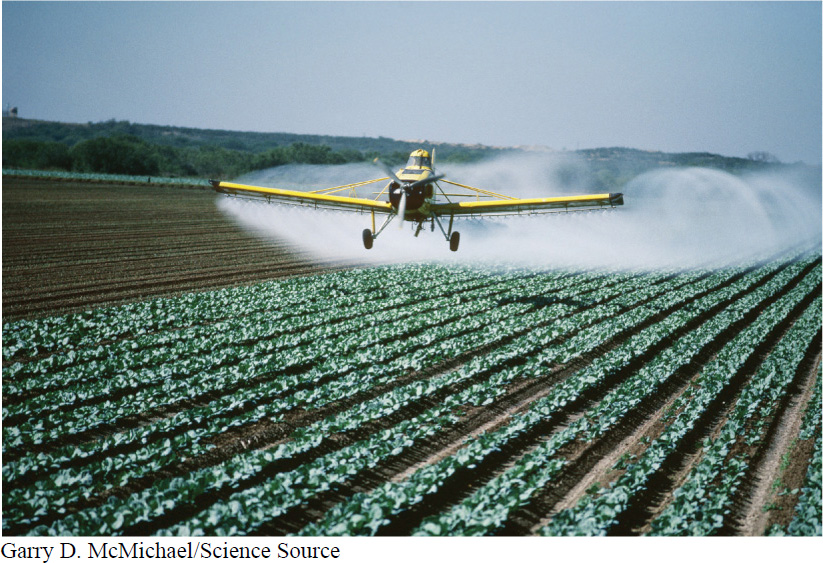
Faster growth and bigger bodies Agriculture includes the cultivation not just of plants but also of animals. And for the first time, the U.S. Food and Drug Administration is close to approving for human consumption a genetically modified animal. The animal in question is a transgenic Atlantic salmon that carries a growth hormone gene from another species (Chinook salmon), along with a region of DNA from a third species (ocean pout) that acts as an “on” switch, facilitating transcription of the growth hormone gene. The transgenic fish, which is reported by its creators to taste the same as regular Atlantic salmon, grows much more quickly and reaches market size within 18 months rather than the usual three years (FIGURE 5-35).

The FDA has reported that the transgenic salmon “is as safe to eat as food from other Atlantic salmon.” Numerous fisheries experts, food safety experts, environmental groups, and consumer groups, however, continue to express concerns about a wide variety of safety and environmental issues and the process by which the safety and environmental impacts of the transgenic species have been evaluated. Health concerns include the possibility that consuming the salmon will cause increased rates of allergic reactions, as well as unknown effects that may stem from potentially higher levels of hormones present in the fish.
212
Most troubling to environmental groups is the risk that the larger, faster-
TAKE-HOME MESSAGE 5.13
Biotechnology has led to important improvements in agriculture by using transgenic plants and animals to produce more nutritious food. Even more significant is the extent to which biotechnology has reduced the environmental and financial costs of producing food, through the creation of herbicide-
List three characteristics commonly engineered into agricultural crops.
The textbook gives the examples of insect resistance, herbicide resistance, and faster growth.